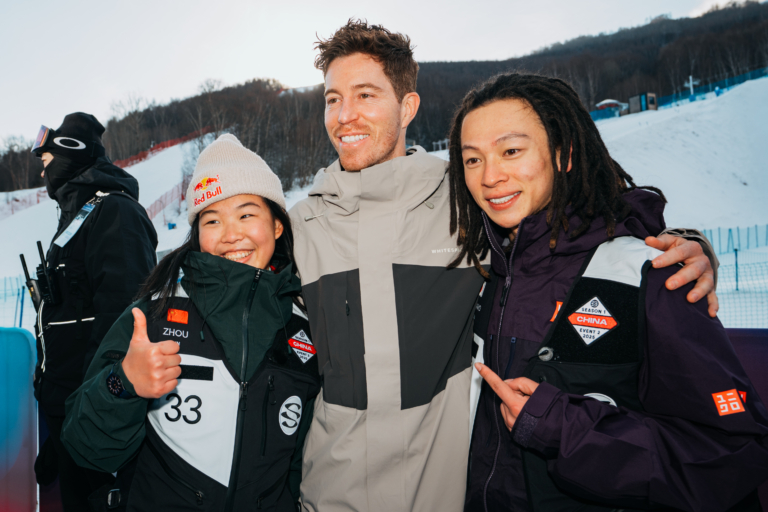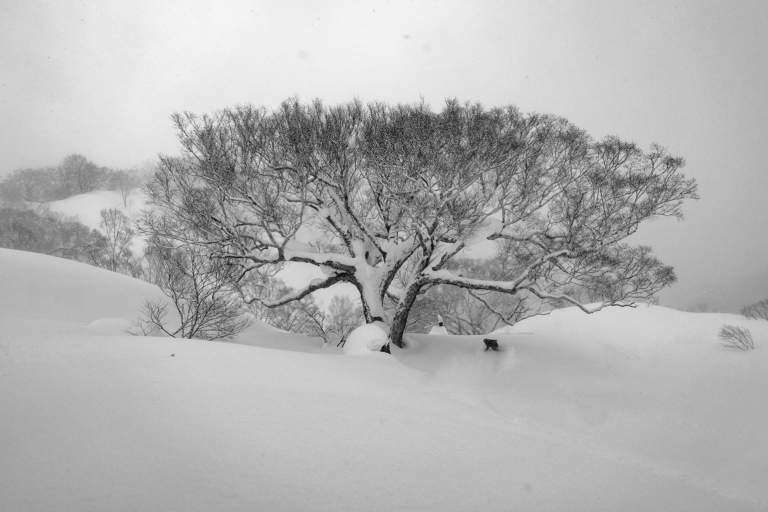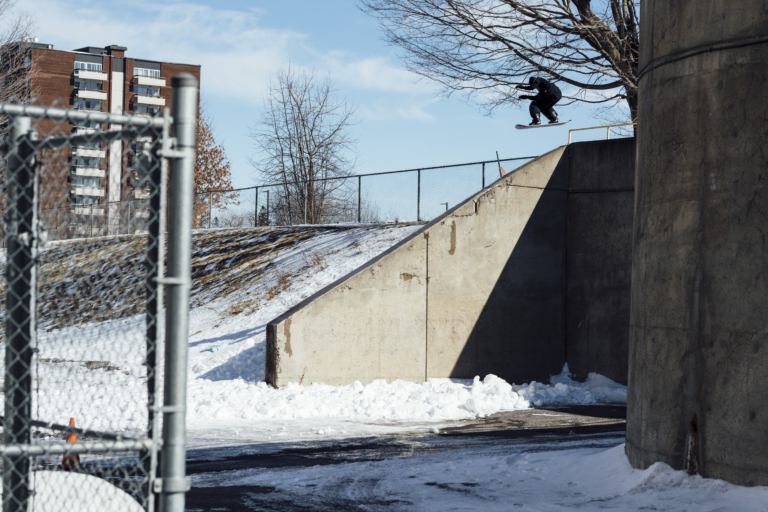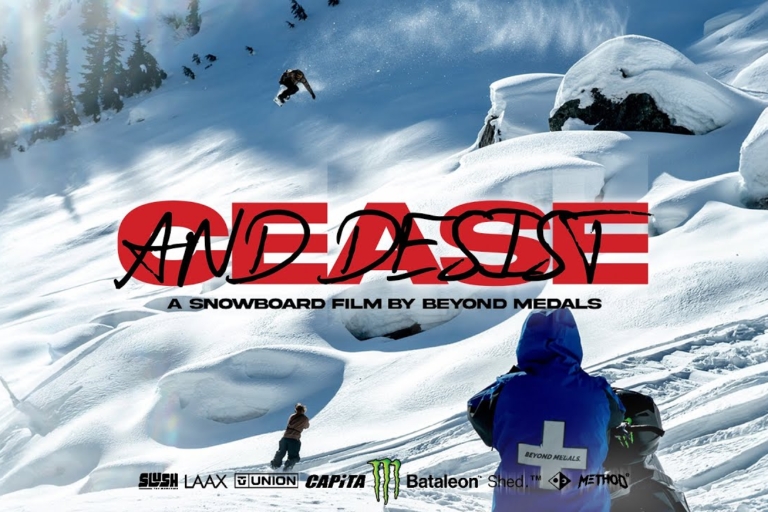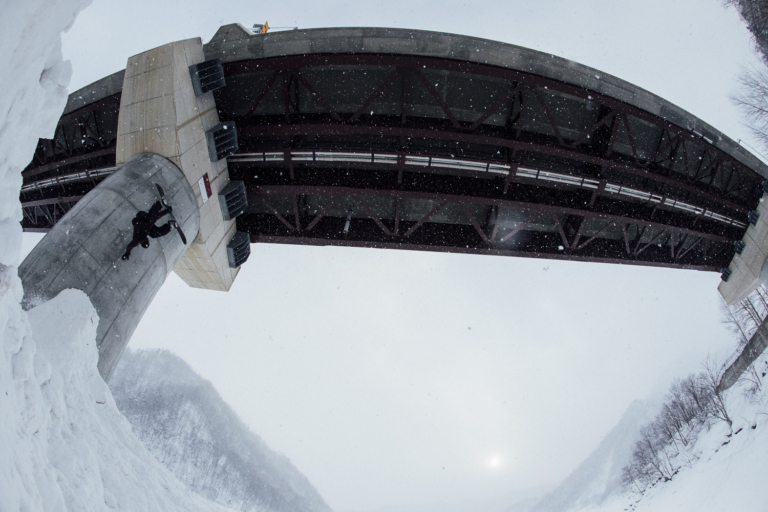Andrew Miller’s Signature Series with Jones Snowboard puts him in rarified air amongst photographers. A good amount have been lucky enough to have their photos on boards across the brands, but not many have also dawned their names with a signature series. Miller’s talent landed him on multiple shapes in a line and graphics that he had full control of from start to finish. Not only is each one a piece of art, but by all accounts, they ride pretty damn good as well. Learn a bit more about the photog behind the boards and his views on the landscape of snowboard photography below. – Clavin

Hometown: Grand Terrace, CA currently live in Crowley Lake, CA
Birthdate: 10/16/1986
Are you still hungover from all the snow you had at home last year? Or has this season sobered you up?
Honestly, still recovering from the ultimate bender that was last season. I started shooting in October and didn’t stop until August. It was the most I have ever shot in my entire career. Way too many photos. I totally welcomed the slow start this year.

Is it true you wanted to be a pro snowboarder growing up?
Totally, it was the dream all through middle & high school. I was a full jib rat growing up riding Snow Valley, Snow Summit, and Bear. I started doing USASA’s, made it to nationals a few times, had some flow going from a few companies but blew up my knee in 2006 during my second year living in Mammoth and kinda came to the reality that it was a far-fetched dream. That was around the time I started shooting my friends in the park in Mammoth and realized the potential new path.
How does it feel to finally have a pro model?
Kinda funny, maybe a little undeserving, but extremely thankful to the crew at Jones for giving me the opportunity. They had been twisting my arm for a while to do something like this and it all finally came together over the summer and I’m super happy with how it all turned out.

When did you get your first camera and what model was it?
My mom always had a random SLR around growing up. The first camera I had and started shooting on was a Canon Ae1 and that was for a darkroom class I took in the 9th grade… so around 2002.
Your mother was an artist, you took some classes in high school, but other than that… mostly self-taught? Pros/cons from that path?
Yeah, my mom was a middle school history & art teacher with an extremely artistic background and love for anything creative. It all really started just in the classic desire to shoot your friends, skateboarding, biking, and snowboarding. Starting around middle school we used to buy point-and-shoot disposable cameras from the liquor store and just mess around with those along with a small Sony mini DV dad cam and make our own edits and print photos for fun. Photo class was fun but very narrow minded. I remember my teacher always saying never shoot into the sun, it will ruin your camera and that’s literally my favorite way to shoot now.
How long did the process take from planning to production on the signature series?
Pretty quickly. Maybe a week or so. Kinda landed the first concept and it just felt right. The concept started with my love for black-and-white photography and the unique textures you can create and capture in different types of snow. My home resort Mammoth had a record-breaking season last year and I shot more photos at the resort than I ever have in my entire career. It goes a little deeper in more of a full circle aspect as my career and love for photography and snowboarding kickstarted in the Eastern Sierra. I spent many formative years riding and living here right out of high school and then moved away and didn’t visit for almost ten years but somehow found my way back in 2016 to raise a family, experience the mountains with a new perspective, and still shooting and riding as much if not more than ever. So it’s a bit of an homage to that journey as well as the different types of personalities of snow we love to ride in the Eastern Sierra and the celebration of a record season.

Where did the color wheel idea come from?
For photographers, we have a lot of tools available to us: compositional rules, lighting knowledge, the exposure triangle, and so on. The concept of the Color Theory is more associated with painting and artists but you can apply and utilize this concept and color to your benefit when shooting photos, especially in snow. Certain colors pop harder than others, especially on white snow or in the blue sky, and literally can make or break a good image. That just goes back to complementary colors. Simply put they are the ones that sit completely opposite one another on the color wheel, and they complement one another. I found this vintage watercolor color theory wheel from the ’70s and it just resonated with me as I love shooting color and felt it helped round out the b/w top sheets with some inspiring color schemes that pop well on the snow and still tie in photography.
Group decision on photos for the topsheet or was this on your own?
I was lucky to have total control and freedom on everything. I chose to sample some abstract moments of the three types of snow we love to ride in the Eastern Sierra that correspond to my three favorite boards to ride in those conditions. Over the past couple of years, I have loved riding and shooting more groomers. During drought years or just time in between storms Mammoth has some of the best groomers around and my go-to board on those days is the Freecarver. The Eastern Sierra is known for producing some incredibly massive storms, 4 or 5 feet in a short period isn’t uncommon and when those bottomless deep days are happening I love to jump on the Storm Chaser. We love to joke about Mammoth getting 1 ft of snow and 5 ft of wind. It’s super windy around here and sometimes it can be good or horrible depending on the direction the wind blows. Mammoth is known for having some epic windbluff days and my go-to board for those conditions is the Stratos. For each of these boards, the photo on the top sheet is a direct correlation to the conditions that these boards were made for.

Going to guess this feels better than a window ad at a shop or a billboard?
So much better. Everytime I grab my board it just feels so rad. I was just in B.C. and saw a bunch of the boards in the wild which was a really cool kinda career highlight moment. It honestly makes me want to snowboard more.
And how good did it feel that they sold out immediately?!
Totally unexpected, and a little overwhelming. We did a limited run of 400 boards worldwide so there are still a few out there at some shops but they sold out online in less than a week. It was a record for Jones. So that def helped with a little more job security…haha.
Which is rarer, going pro or getting a staff photog position with a brand in snowboarding?
I would say staff photo position. It seems like there are only a handful of guys out there that have one. You can really tell the brands that have invested in in-house staff media. The output is so much better, more personality, connection and they are able to really create distinct styles and relationships with the teams and brand vs just bouncing around with different creatives and have the visual experience of the brand feel so all over the place and sometimes out of touch.

How does it feel to have one of the more coveted jobs in snowboarding?
I’m extremely thankful. It’s been a journey, a lot of hustling and grinding to get to this point but I somehow convinced Jeremy to take a chance on me and invest on an in-house staff photographer and social marketing. I worked double time for my first “test” season in 2015/16 and my goal was to crush it so hard they wouldn’t have any choice but to offer me a full-time gig the following year. It’s been almost 8 years with Jones and it’s been a great journey, I honestly could not imagine working for another brand at this point.
If working with Forrest, Jeremy and crew was kind of your big break a decade or so ago, what do you think has kept you at the top of your game the past few years?
I’m not sure. I’m kinda a lone wolf to be honest. I tend to keep to myself, I don’t really go to many events or parties with all the cool bros. I just do my thing and try not to think much or care about what everybody else is doing. That might come off bad or sound like a dick but it’s kinda the route I have always taken. I still love snowboarding, I still love photography and I just try to keep on creating and putting out work that I’m stoked on. I have been really enjoying the challenges of shooting on the resort on a busy pow day and coming back with legit images. I think the more relatable snowboarding is growing these days. If you had told me my most popular/viral image of my career would be a photo from a green run in a blizzard taken right after getting off the lift I never would have believed you. I think viewers want to be able to imagine themselves in the videos or photos and for whatever reason the wild and crazy AK spines / Heli stuff just seems so out of touch for most. Even though it’s the most exciting to shoot and ride.

What would you say the key is for shooting a good snowboard photograph?
Being able to invoke a strong feeling from a photo. To have a photo that can capture the viewer to actually pause and get lost in the image or wonder how the person rode that, where it was taken, how the photographer captured it and also envision themself in that situation. Which is easier said than done, especially these days when you have so much content at your fingertips. You all know that feeling when you see an insane photo and say “wow” out loud. It takes a special photo to get that reaction and it doesn’t happen that often these days.
If you could go back in time and give yourself advice fifteen years ago, what would that advice be?
Pay your taxes. Don’t run up crazy credit card debt. And get your business side dialed because that is arguably one of the most overlooked and important aspects of snowboard photography. Also learning to develop your own style early on. Something that will help set you apart from everybody else.

What is the biggest threat to snowboard photography currently?
Photography influencers and snow photographers who think they need to get in with these horrible trends to gain more followers and boost their engagement. Maybe I’m just an old head now but this is the kookiest shit I have ever seen lately. Don’t let the algorithm dictate what you think you should post. Same goes with brands and media outlets. Keep pushing legit photography, keep pushing quality photo galleries, you can control your own narrative as well as what the industry and your audience is constantly seeing. If it’s just shitty reels and iPhone videos because you want views, that’s what your audience will get used to. I have no problem with that stuff but I just think there needs to be more of a balance. I think the entire snowboard landscape and media outlets could be doing a better job at providing more of a platform for photographers and all the images that don’t get used every year because it’s an endless well of incredible content and storytelling.

End on a light note haha… what makes you feel optimistic in the snowboard photography industry currently?
Honestly, it’s so cool and rad to see some of my influences early in my photography career still out there, still crushing it and still doing for the love of it: Oli G, Zim, Matt Georges,Yosh, Blotto, Bob Plumb… the list goes on. These guys are part of the culture and uphold the quality, love and benchmark for snowboard photography. Also, it feels like the mags are starting to get back in the rhythm again, stoked to see photo annuals making a comeback and it’s important that we all collectively support and subscribe to keep them all afloat to help preserve the culture of snowboarding and most importantly snowboard photography.

